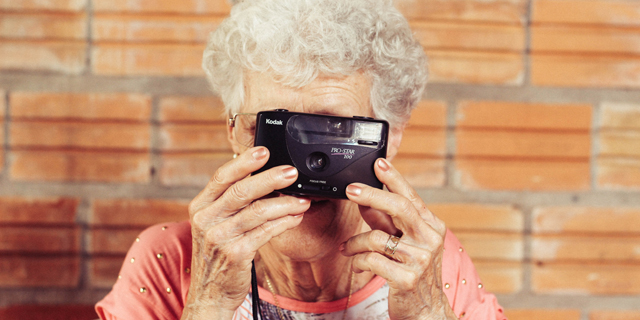Ageism at large
It hasn’t always been this way

Image: Tiago Muraro - Unsplash
Currently, I am reading ‘This Chair Rocks…A Manifesto Against Ageism’ written by Ashton Applewhite who is a recognized expert on ageing. After having read a couple of chapters, Ashton has made me sit up and take notice. She puts ageism in the same category as racism, sexism and all other types of discrimination and stereotyping - something I had really never considered.
“This book is a call to wake up to the ageism in and around us, embrace a more nuanced and accurate view of growing older, cheer up and push back. What ideas about getting older have each of us internalized without realizing it?” she asks. This is a good question, and maybe why ageism is so rife.
Ashton points out that it hasn’t always been this way. When older people were relatively rare, they retained their social dignity and were respected for their valuable skills and knowledge. During the nineteenth and twentieth centuries massive social changes reduced the visibility of older members of society, diminished their opportunities and eroded their authority.
Personally, I have found that older people often tend to be ignored socially and in the business world. Shopping with my daughter, while looking for something or when I may need extra information, I find that staff turn to my daughter and provide her with the information, rather than me. I seem to have become invisible. Many of my friends say that they have experienced the same situation.
It also happens in the workforce, where many workers are obliged to leave at retirement age in spite of being in good health and a preference to remain working for a few more years. Now that people are living longer, and generally in reasonably good health, it is important them to be able to keep working to fund a retirement period that may last for twenty or thirty years.
A few years ago, when many of their workers were leaving at retirement age, the BMW Company in Germany came to the realisation that their younger workers didn’t just magically obtain the knowledge and experience which older workers had acquired over the duration their working lives. The company realised that it was in their best interests to retain their older workers, so they sent researchers down to the assembly line to talk to their employees. When approached, it seemed that many of the workers would be quite happy to remain at work if a few inexpensive changes were made to the workplace such as the type of boots they wore, the type of floor they stood on, suitable chairs to sit on while working and flexible working hours. For an outlay of around $50,000 (US) BMW adjusted their workplace to suit older workers, many of whom elected to stay on. This ultimately resulted in around a 7% increase in profits - a win-win situation. The Ford Motor Company in the USA also retained may older workers in a similar situation.
https://www.youtube.com/watch?v=1b2aLleeC4A
https://hbr.org/2010/03/the-globe-how-bmw-is-defusing-the-demographic-time-bomb
In Japan, robotic suits have been developed which enable older workers to lift heavy loads that would normally be too heavy for them. This piece of technology has allowed older workers to remain in their jobs longer. An older relative of mine commented on how it could help him when shearing his sheep.
In Singapore and Hong Kong, people who are unable to cross at pedestrian crossings as quickly as the Traffic Lights allow are issued with a card, which when placed against the Traffic Light slows the speed of the lights. And in the Netherlands iPhones are being trialled for the same purpose.
It seems to me that it is just a matter of society realizing, that with the increasing number of people living longer in reasonable health, it is necessary to change the way we think about how things are done. What has been adequate in the past is no longer satisfactory and requires new thinking and action to accommodate this younger breed of oldies…
It is also important to realize that older people are extremely diverse. Many are quite capable of doing things that may daunt people half their age. For instance, in Ohio, Virginia Mills took her first flying lesson in a Cessna when she was 105 years old. While in South Australia, Irene O’Shea at 102 took up sky diving. In Perth, David Bottomley at 94 is a PhD graduate as was Sydney’s Dr Lis Kirkby at 93. Dr Bottomley reportedly said that people need to be recognized for their ability rather than judged by their chronological age.
It is possible that one major reasons for older people often being treated like second class citizens is their ‘not-in-paid-work’ status which somehow makes them invisible. Ashton Applewhite has an answer for this as she points out that in America, the older generation of volunteers saves the government seventy-five billion dollars each year. And in Australia, the economy benefits from around forty billion dollars in unpaid care work plus twenty-five billion dollars in volunteer work. Much of this is done by older people. So, it seems to be time for people to recognise older people’s worth and remember, that with a bit of luck, most of us will get old.
[Source: Lorna Prendergast, M-Ageing, lpr31386@bigpond.net.au]